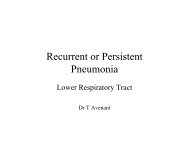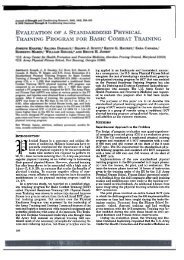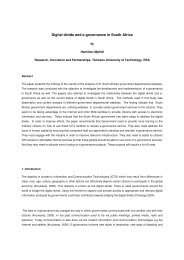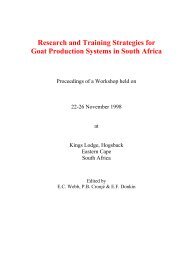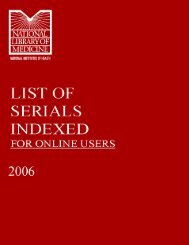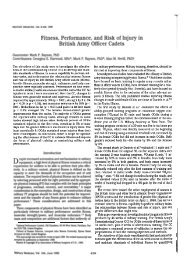NUTRITION INFANCY AND CHILDREN - University of Pretoria
NUTRITION INFANCY AND CHILDREN - University of Pretoria
NUTRITION INFANCY AND CHILDREN - University of Pretoria
Create successful ePaper yourself
Turn your PDF publications into a flip-book with our unique Google optimized e-Paper software.
<strong>INFANCY</strong> <strong>AND</strong> <strong>CHILDREN</strong><br />
2<br />
_____________________________________________________________________________<br />
LEARNING OBJECTIVES<br />
1. BREASTFEEDING<br />
1. Breastfeeding – instigating and maintaining breastfeeding.<br />
2. Lactating mother – practical guidelines for the lactating woman,<br />
identifying and treating problems and complications.<br />
3. Formula feed.<br />
4. Adding fluids and milk to the diet.<br />
5. Adding solids to the diet.<br />
6. Weaning.<br />
7. Allergies and food intolerance.<br />
8. Identification <strong>of</strong> toxins and the diagnosis and treatment <strong>of</strong><br />
poisoning.<br />
• Breastfeeding is always the preferred method <strong>of</strong> feeding an infant (definitely during the first<br />
6 months <strong>of</strong> life) and even the young child. Breast milk <strong>of</strong>fers many advantages to<br />
developing infants i.e. lower rates <strong>of</strong> gastrointestinal disease, anaemia, respiratory ailments<br />
and otitis media. In addition, breastfeeding provides a unique opportunity for bonding<br />
between infant and mother.<br />
• The position <strong>of</strong> the mother is very important in breastfeeding. She needs to sit in a big<br />
comfortable chair and must listen to what the baby is doing - he needs to suck and swallow<br />
(not suck and suck without actually drinking).<br />
• All the milk is nutritious, although there is less fat and carbohydrates in the first 20 ml <strong>of</strong><br />
breast milk.<br />
• The baby must drink from both breasts at every feed.<br />
• One feed takes about 20 minutes (5-10 minutes on each breast).<br />
• Hold both hands under the baby's arms and hold him upright to expel winds.<br />
• It is easy and practical to demand-feed (feeding when asked for).<br />
• Iron deficiency can develop in a breast fed baby - do a blood count at 6-9 months to<br />
exclude this, especially if he does get recurrent infections.<br />
Frequency <strong>of</strong> feeds:<br />
♦ 2,3-2,8 kg: usually 2½ hourly feeds (must wake the baby after 3 hours to feed, because <strong>of</strong><br />
possible side effects e.g. hypoglycaemia, vomiting, choking).<br />
♦ >3 kg: 3-4 hourly feeds, but if the baby is awake after 2½ hours, he can be fed. Wake him<br />
after 4 hours for a feed until the age <strong>of</strong> 14 days.<br />
Problems in breastfeeding:<br />
2. Low birth weight: These babies tire quickly and the sucking reflex is <strong>of</strong>ten not well<br />
developed. Give breast milk in a bottle until he has gained enough weight to be able to suck<br />
better, but always put the baby on the breast before giving the bottle.<br />
Copyright © <strong>University</strong> <strong>of</strong> <strong>Pretoria</strong>








